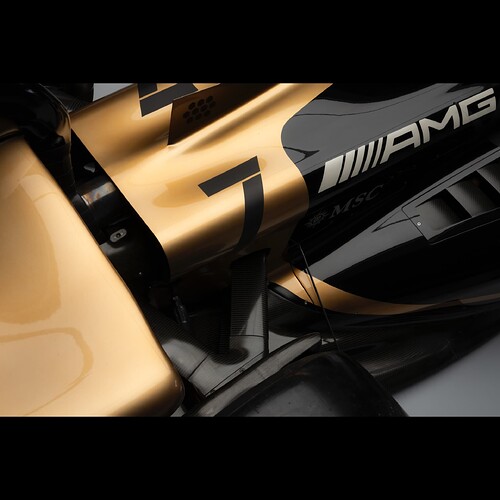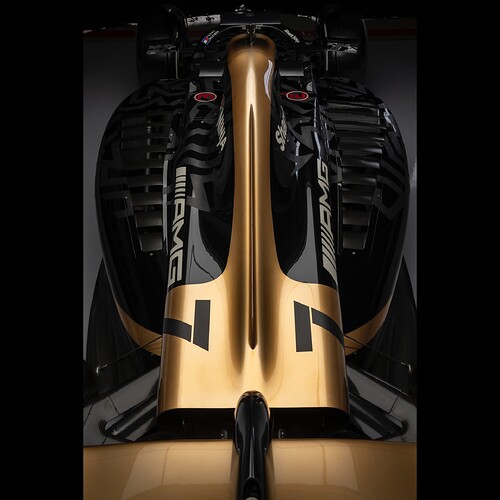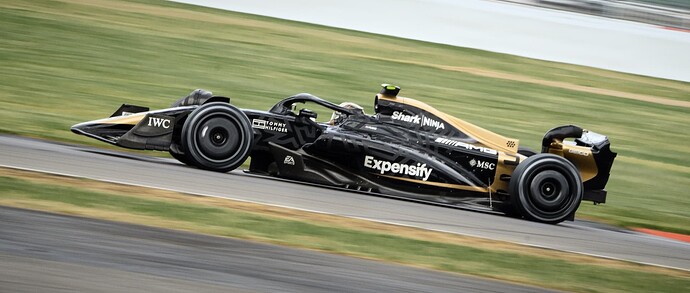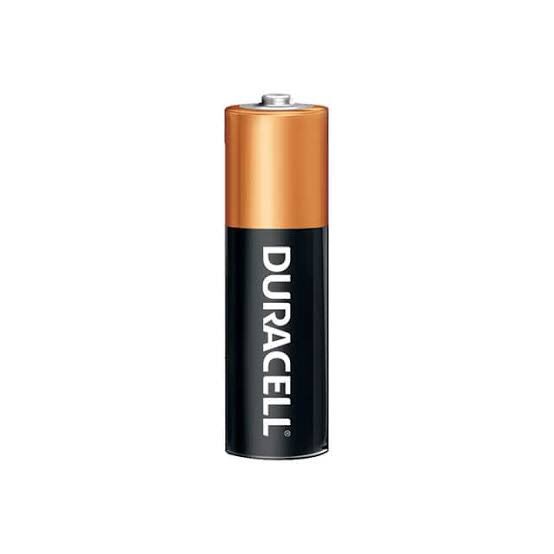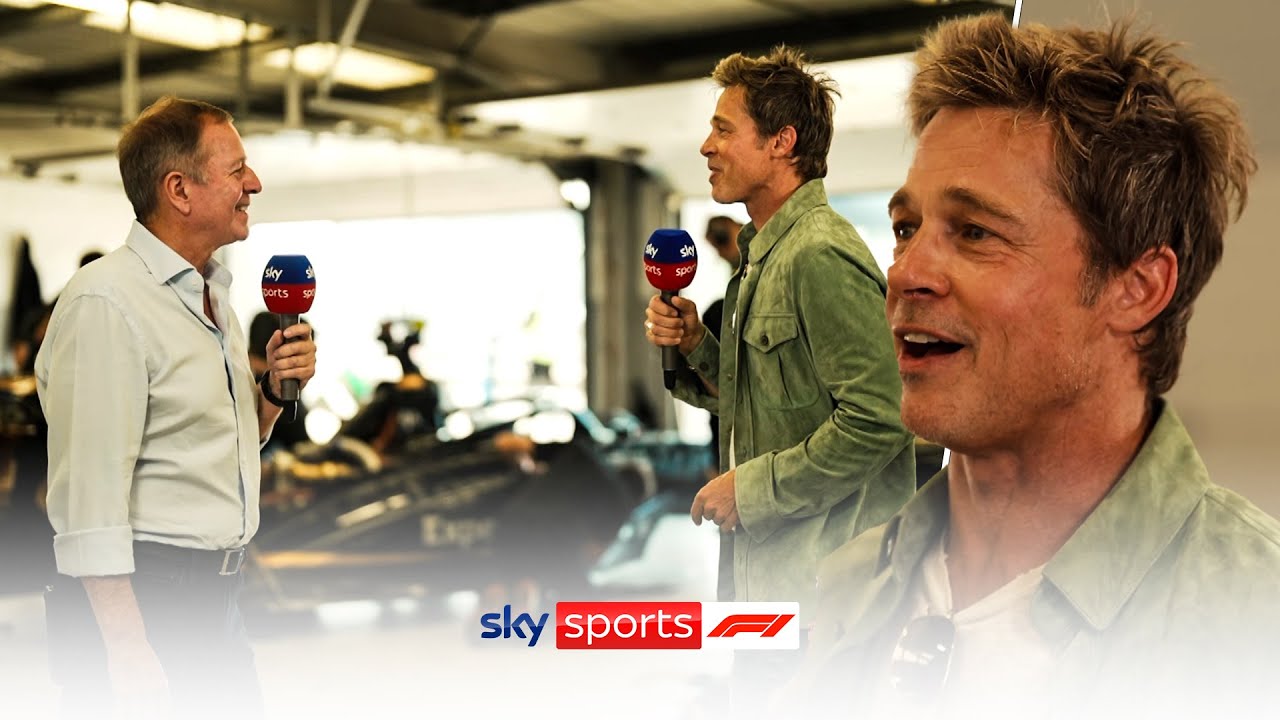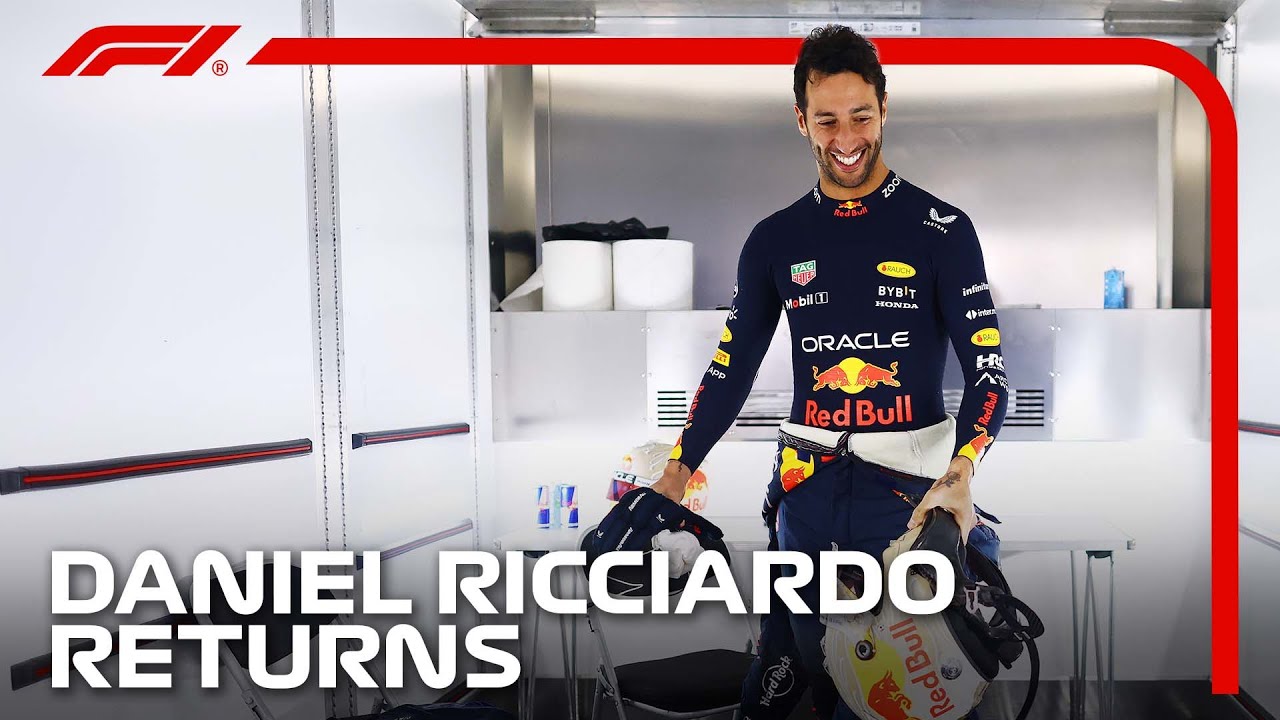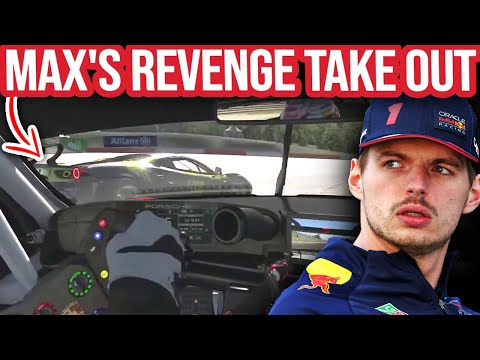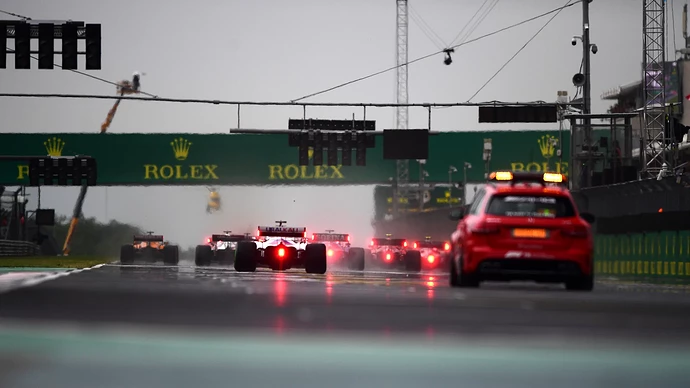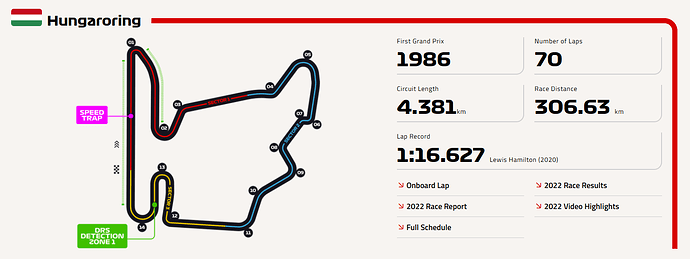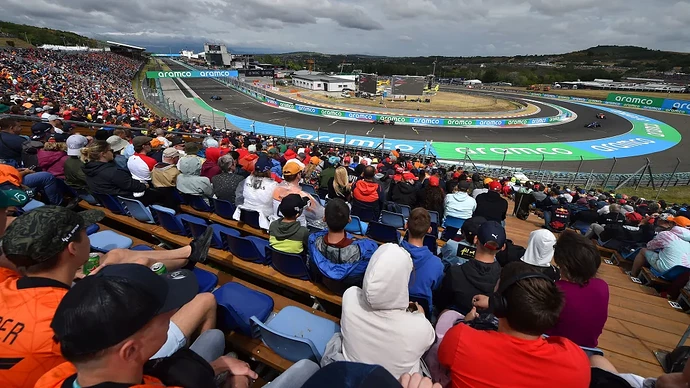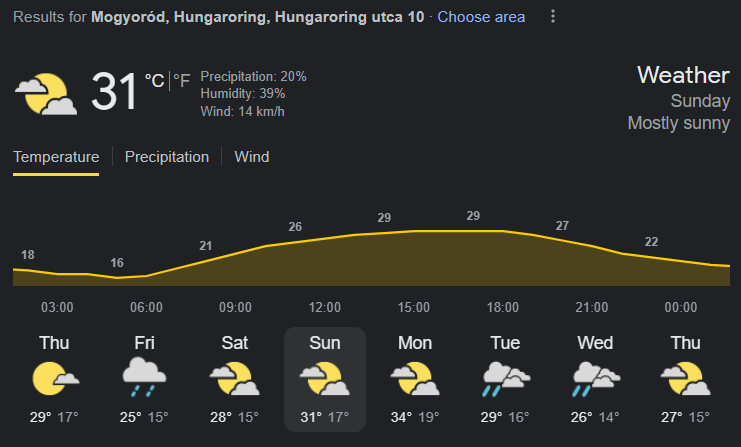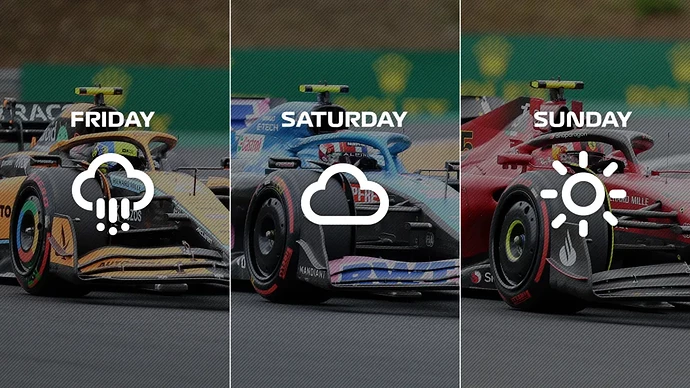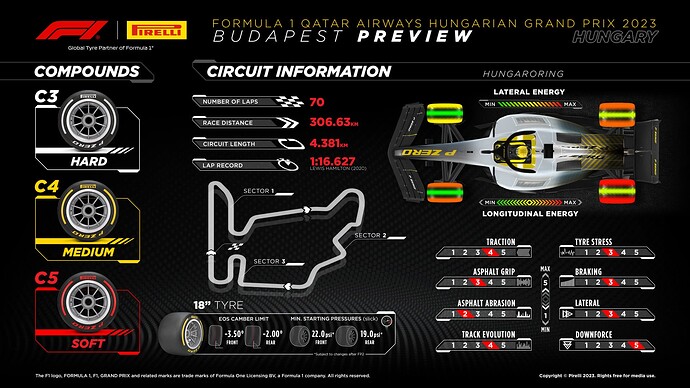2023 Hungarian Grand Prix 
Hungaroring | Mogyoród | Budapest | Hungary | 22 July
2023 Season - Grand Prix 11/22
It’s another back-to-back double header of F1 weekends to enjoy before the traditional summer shutdown for the teams. This weekend we’re in Budapest before the circus shuffles back across the continent to Belgium next weekend.
Despite the Hungarian GP often being a bit of a processional race, there were 99 overtakes in the race last year. Hopefully, we’ll see more of that type of Hungarian GP again this year. We will also get to see the trial of the ATA (Alternative Tyre Allocation) system in Qualifying that was originally going to be tested in Imola. If it’s dry during Qualifying, hard tyres must be used in Q1, mediums in Q2, and softs in Q3.
Meanwhile, the big record that everyone is waiting to see get broken is if Red Bull can win a record 12 consecutive F1 races. The odds, and the bookies, are strongly in favour of exactly that happening.
Current 188BET’s odds for Race Win:
- Max Verstappen @ 1.40
- Sergio Perez @ 11.0
- Fernando Alonso, Lewis Hamilton @ 13.0
- Carlos Sainz, Charles Leclerc, Lando Norris @ 19.0
- George Russell @ 26.0
- Esteban Ocon, Lance Stroll, Oscar Piastri, Pierre Gasly @ 151
- Daniel Ricciardo @ 301
- Alex Albon, Kevin Magnussen, Logan Sargeant, Nico Hulkenberg, Valtteri Bottas, Yuki Tsunoda, Zhou Guanyu @ 601
(188BET’s odds are presented in decimal form: for every $1 wagered you would win the figure represented by the odds; so, if Verstappen is favourite at 1.50, you would win $1.50 for every dollar bet.)
Vital Statistics
- First Grand Prix – 1986
- Track Length – 4.381km
- Lap record – 1m 16.627s, Lewis Hamilton, Mercedes, 2020
- Most pole positions – Lewis Hamilton (8)
- Most wins – Lewis Hamilton (8)
- Pole run to Turn 1 braking point – 476 metres
- Overtakes completed in 2022 – 99
- Safety Car probability – 38%*
- Virtual Safety Car probability – 38%*
- Pit stop time loss – 20.84 seconds
Last Five Hungarian GP Poles
- 2022 – George Russell (Mercedes)
- 2021 – Lewis Hamilton (Mercedes)
- 2020 – Lewis Hamilton (Mercedes)
- 2019 – Max Verstappen (Red Bull)
- 2018 – Lewis Hamilton (Mercedes)
Last Five Hungarian GP Winners
- 2022 – Max Verstappen (Red Bull)
- 2021 – Esteban Ocon (Alpine)
- 2020 – Lewis Hamilton (Mercedes)
- 2019 – Lewis Hamilton (Mercedes)
- 2018 – Lewis Hamilton (Mercedes)
- Trivia – Esteban Ocon took his maiden F1 win in the 2021 race, while George Russell claimed his first-ever F1 pole at the 2022 event.
The Schedule
It’s a time zone straight shot between us and the Hungaroring, so no confusion over when to turn on the telly this weekend:
The Strategy
Bernie Collins, former Aston Martin F1 strategist
Budapest is a high downforce track featuring several big braking zones that’s generally difficult to overtake on – often described as Monaco without the walls – meaning a strong qualifying result, and securing track position, will be vital to success.
Given this factor, the race has typically been a one-stop, but an unexpected performance from the hard tyre last season resulted in teams preferring softer compounds and a two-stop race. For 2023, Pirelli have brought a softer compound range of the C3, C4 and C5, so we seem set for another multiple stop race.
But that’s not the only tyre related change for this year’s event. Having been planned for Imola, the ‘Alternative Tyre Allocation’ will debut this weekend, with 11 sets of tyres available to the drivers (3x hard, 4x medium and 4x soft) as opposed to the usual 13. If it’s dry during qualifying, hards will be enforced in Q1, mediums in Q2 and softs in Q3.
A large decrease in lap times through qualifying due to track evolution and softer compounds mean drivers and the pit wall will have to adapt quickly, with different tyres requiring different warm up, braking and power application, which could make calculating a qualifying cut off (if a driver is safe or not) more challenging.
The Circuit

The Hungaroring is a 4.381km permanent motorsport racetrack in Mogyoród, Pest County, Hungary where the Formula One Hungarian Grand Prix is held.
In 1986 it became the location of the first Formula One Grand Prix behind the Iron Curtain. Bernie Ecclestone wanted a race in the USSR, but a Hungarian friend recommended Budapest. They wanted a street circuit similar to the Circuit de Monaco to be built in the Népliget – Budapest’s largest park – but the government decided to build a new circuit just outside the city near a major highway. Construction works started on 1 October 1985. It was built in eight months, less time than any other Formula One circuit. The first race was held on 24 March 1986, in memory of János Drapál, the first Hungarian who won motorcycle Grand Prix races.
According to a survey put together by the national tourism office of Hungary, Mogyoród ranks third among Hungarian destinations visited by tourists, behind the Danube Bend area and Lake Balaton, but ahead of Budapest.
When was the track built?
Work began on the Hungaroring in 1985, and the track was race-ready just nine months later. The Hungarian government had originally considered reviving the old Nepliget park circuit in Budapest in a bid to host Formula 1 in the country, but in the end decided to create a purpose-built facility instead.
When was its first Grand Prix?
The year was 1986. Nelson Piquet won the first F1 race around the Hungaroring, famously slithering his Williams around the outside of Ayrton Senna’s Lotus to take the lead.
What’s the circuit like?
The lack of straights at the Hungaroring often sees it compared to a karting circuit – and it’s true, the resemblance is uncanny. With several series of corners to string together, teams opt for Monaco levels of downforce, with a well-sorted chassis tending to be rewarded over horsepower given the short straights on offer. It’s a challenge many of the drivers relish, however, with finding a good rhythm key to setting fast lap times.

The Driver’s View - Jolyon Palmer, former Renault F1 driver
Budapest feels like a small circuit when you’re there but there’s plenty that goes into it with 14 corners. The first sector is basically two corners: a big braking zone at Turn 1, which is a relatively straightforward right-hander, but quite bumpy in the braking area, so it can induce some front locking, before heading into Turn 2, which is slightly downhill.
The middle sector is one of those ones where you’ve got to find a rhythm because out of pretty much every corner you need to be positioned for the next corner coming through it. You go from Turn 4 into 6, then you get a tiny breather, but it carries you through the next sweeping section, building speed all the way.
In the final sector, sometimes the tyres are starting to overheat and you start to scramble around for a little bit of grip there. In the race, you’ve got to think about setting up your overtake coming out of Turn 14, the final corner, because that is your one chance to do something into Turn 1 and, if not, into Turn 2. If you don’t get it done there, you’re probably going to be following for the next lap.
The Weather
It’s hot in Hungary. Temperatrures in the high 20s and into the 30s are expected. There’s also a forecast for a fair bit of thunderstorm activity in the area over the weekend. Actually, it sounds a lot like summer on the Highveld.
Friday - FP1 and FP2
The weather will be unsettled for much of the day with thundery showers expected in the afternoon and evening.
FP1: 26°C | FP2: 27°C
Max: 28°C | Min: 19°C
Chance of rain: 80%
Saturday – FP3 and Qualifyiing
Cloudy in the morning before the sun breaks through in the afternoon. However, there is a chance of a shower or two in the afternoon.
FP3: 27°C | Q: 28°C
Max: 29°C | Min: 19°C
Chance of rain: 20%
Sunday – Grand Prix
Mostly sunny and dry all day with light to moderate gusts of up to 35 kph expected in the afternoon.
GP: 29°C
Max: 30°C | Min: 18°C
Chance of rain: <20%
The Tyres
There’s a fairly long pit straight, which provides the only real overtaking opportunity under braking into the first right-hand corner. Then there are 13 more corners – seven right-handers and six left-handers – on a circuit that is second only to Monte Carlo in terms of slowest average speed; to the extent that the cars use similar downforce settings to Monaco. With so many slow corners, traction is one of the key factors for good performance and the biggest risk is tyre overheating. Despite being a permanent track, the Hungaroring is not used very often and the asphalt conditions improve considerably during the weekend as the ideal racing line rubbers in.
A trio of softer compounds (C3, C4 and C5) compared to 2022, while a new tyre allocation for qualifying (known as ATA, or ‘Alternative Tyre Allocation’) will be tried out for the first time, with the obligation to use just the hard in Q1, medium in Q2 and soft in Q3 if conditions stay dry. Both these changes, at least on paper, should lead to a wider range of options, particularly in terms of strategy. The ATA also saves two sets of dry tyres compared to the traditional format (using 11 sets instead of 13) and it will be run again at the Italian Grand Prix in Monza. After that, the FIA, F1 and the teams will decide whether or not to adopt it for next season.
- For the Hungarian Grand Prix the teams will use softer compounds than last year. The C3 will be used as P Zero White hard, C4 as P Zero Yellow medium and C5 as P Zero Red soft.
- Budapest will host the debut of the Alternative Tyre Allocation (ATA), with just one mandatory slick compound for each qualifying session. Teams must use the hard compound in Q1, medium in Q2 and soft in Q3. If qualifying is wet, teams have a free choice of compounds as usual.
- Under the ATA rules, the number of tyre sets available for each car is reduced to 11, instead of the 13 available for a normal race weekend. Each driver will have three sets of hard tyres, four sets of medium tyres and four sets of soft tyres. The number of wet tyres remains the same: three sets of full wets and four sets of intermediates, with an extra set of intermediates authorised if it rains on Friday or adverse weather is predicted for Saturday.
- On Friday, one set of tyres must be returned at the end of each free practice session. A further two sets must be returned on Saturday after FP3. This leaves seven sets of tyres for qualifying and the race, of which at least one set of hard tyres and one set of medium tyres must be kept for the race.
- After the Hungaroring, the ATA rules will be trialled again at the Italian Grand Prix during the first weekend in September.
- Hungary often features high ambient and track temperatures. With the race taking place at the end of July, and the circuit located in a natural bowl with little airflow, Budapest will be a challenge for thermal management of the tyres as well as driver fatigue.
- The most common strategy at the Hungaroring is a two-stopper, with a one-stopper occasionally preferred. The choices made in 2022 were heavily influenced by a Virtual Safety Car and a Safety Car. Almost all the drivers made three stops, using all the available compounds. At the start, half the grid started on the softs and the other half on mediums, with the hards being used for the second or third stint.
Menjünk versenyezni Magyarországon! 

